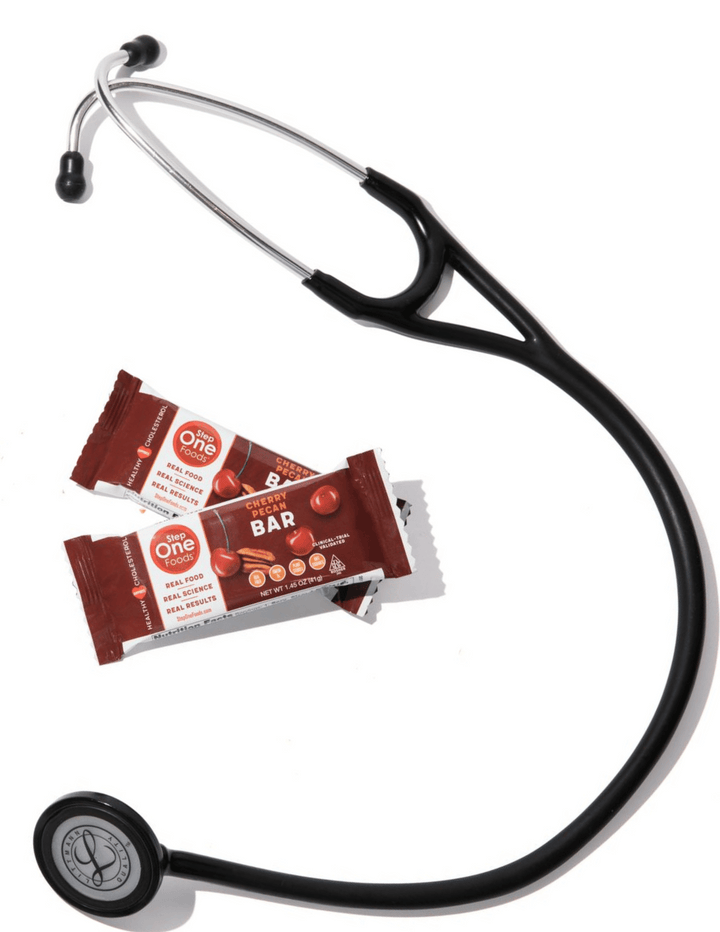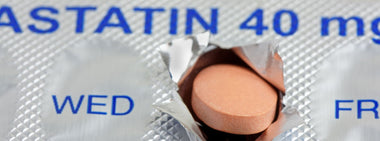How to lower your triglyceride levels

2023 Update: You may also want to read our comprehensive overview of "How To Lower Cholesterol!" This has more detailed information, including the different types of cholesterol including High-density lipoprotein (HDL), Low-density lipoprotein (LDL), Triglycerides).
What Are Triglycerides?
Triglycerides are different. They're not so much cholesterol particles as much as they are efficient transporters of fat - with only about 20% of a TG particle consisting of cholesterol. If you recall from a previous blog, normal TG levels fall below 150 mg/dL but the scale they're measured on is quite broad (between 27 mg/dL and over 3000 mg/dL in my experience).
Understanding Your TG levels
TG's are not all that important for heart disease risk on their own. Rather they're more significant depending upon the company they keep and whether they are very high. Very high levels of TG’s – over 500 and especially over 1000 mg/dL are typically genetically driven and associated with an increased risk of pancreatitis (inflammation of the pancreas). This is an extremely painful condition that can result in scarring of the organ. Therefore, in patients with very high triglyceride levels, medication may be prescribed to lower TG levels not so much to prevent heart disease but to prevent pancreatitis.
Below 500 mg/dL, TG levels are more lifestyle driven and their significance depends more upon the company they keep. In general, TG levels tend to mirror HDL levels in the opposite direction – patients with low HDL levels tend to have high TG levels while patients with high HDL levels tend to have low TG's (obviously preferred situation). The combination of low HDL and high TG’s is a particularly worrisome profile, carries as much heart disease risk as a high LDL and even has its own name - "metabolic syndrome".
How To Get Desirable Results Without Medications
OK that was the bad news – the good news is that elevated triglycerides and even the metabolic syndrome pattern are exquisitely sensitive to lifestyle changes. Weight loss, dietary modification, and exercise can TOTALLY NORMALIZE triglyceride levels and even eliminate the metabolic syndrome pattern. The lifestyle alterations needed aren’t minor – many people require radical weight loss and marked dietary changes – but desirable results ARE achievable without medications.
How can you lower your triglycerides? It’s the old familiar diet, exercise, and weight loss again – but with a couple of twists. Diet is especially powerful in influencing triglyceride levels. But it’s NOT a low fat diet – despite that this might seem counterintuitive (after all, TG’s are primarily fat particles – right?) Yes – TG’s are primarily fat particles but they actually reflect an overabundance of carbohydrates rather than of actual fat.
Huh? All carbohydrates are broken down into sugar. And our bodies do need some sugar to be readily available as a source of energy – but we have only so much storage capacity for sugar in cells. You can think of it as our bodies having a finite amount of cupboards to store sugar in. But once they're full, they're full. And if you've just eaten a bunch of candy or a super processed empty carb (like a bagel) you might still have sugar circulating in your bloodstream after all the cupboards are full. Our bodies, because they're so clever, turn that extra sugar into TG’s (essentially condensing them) making storage much more compact. You can therefore see how a low fat diet (which is almost always high in carbohydrates) would be counterproductive in this situation.
The Solution
The answer is a low saturated fat, high fiber, calorie controlled diet. Sound familiar? Just remember that "low saturated fat" does NOT mean LOW FAT. Low saturated fat means being able to consume unsaturated fats such as olive oil, the oils in walnuts, almonds, chia, flax, in avocados and in fish. “Low carbohydrate” diets actually work well in patients with high triglycerides, but for optimal health, the often indiscriminate saturated fat consumption which occurs on those diets needs to be avoided.
TG levels are also quite sensitive to weight loss. What I have noticed in my own patients is that weight loss tends to result in a step wise rather than gradual decrease in triglyceride levels. It’s almost as if you need to prove your ability to shed a certain number of pounds before your body will reward you with a change in your TG’s. The actual number of pounds required varies from person to person – so this can be a bit of a frustrating process as you’re following your weight and your cholesterol numbers – but it also underscores the need to keep going with weight reduction until you get to your healthy weight, because the positive cholesterol effects may not be evident until that point.
Changes in triglyceride levels can be dramatic from an absolute numbers standpoint – whereas we deal with single digits for HDL cholesterol changes and 10’s for LDL, for TG’s the changes can often be measured in the 100’s (especially when you start out with a high number). The amazing thing is that such changes can be seen with lifestyle management alone. Nothing underscores the benefits of a healthful existence like one of your cholesterol components dropping like a brick!
Try Step One Foods Today!
And where does Step One fit in? Our twice-a-day program is low saturated fat, high fiber and calorie controlled so it's a great start and may yield some improvements in TG levels. Plus every serving is brimming with walnuts, almonds, chia and flax! But as noted above, it typically takes a bigger lifestyle overhaul - including improving the nutrient composition of EVERY meal - to dramatically reduce marked triglyceride elevations or eliminate metabolic syndrome for good.

Tested & Proven Results.
- Cardiologist formulated
- Supported by over 500 publications
- Clinically-proven, in a double-blind randomized trial with Mayo Clinic and The University of Manitoba
80% of participants lowered their cholesterol in just 30 days. With just two servings per day, Step One Foods offers a proven-effective way to naturally lower LDL (bad) cholesterol.
Get heart health tips and articles like this, delivered right to your email.
New articles every week.
You may also like...

You don’t need to avoid foods with cholesterol…except for these




